THE HILL NEWS
VERBA VOLANT, SCRIPTA MANENT

VERBA VOLANT, SCRIPTA MANENT
By MAX YANG ‘27
STAFF WRITER
In a noticeable effort to elevate volunteerism at Hill, a groundbreaking three-term community service co-curricular was recently unveiled. The novel program is known as Hill VIPS and spearheaded by Cathy Skitko, Director of Communications and Community Relations. The initiative hopes to tackle the persistent winter-term roster gap in volunteers by creating a dedicated corps of students who serve the local community year-round and mentor their peers in the spirit of service leadership.
“I proposed this program to ensure we can continue serving our nonprofit partners, even when we typically see fewer volunteers,” Skitko said. “Many students who might otherwise have done community service are fulfilling their athletics requirement.”
Skitko further explained the shortage of volunteers during the winter season.
“It’s also a disappointment for our community partners,” Skitko added. “Under this new plan, students who are genuinely passionate about community engagement can commit to service for all three athletic terms, ensuring we’re able to continue supporting these organizations year-round.”
Skitko emphasized that local nonprofits “absolutely love having Hill students there.”
Many sites, such as the Ricketts Center, a local hub for tutoring and youth activities, look forward to a reliable schedule of Hill School volunteers. With the new three-term approach, Hill students will be present each season, enriching relationships and providing valuable help.
“If we can send students all year, our community partners can count on us,” Skitko explained. “We no longer have to apologize for not having volunteers during a particular term.”
Beyond simply increasing the workforce, the program envisions a leadership team of
students who will mentor newcomers. “Part of what they will bring to this is not only that we will be able to provide students to our nonprofit partners year-round,” Skitko said. “This core group of really passionate students who want to give back to the community will also be mentoring other students in community service.”
Many concerns of this program lie in the lack of athletic activities, possibly leading to poor physical well-being.
“Our afternoon community service is much more than opening doors and running small errands,” Skitko noted. “If you’re working with the food pantry, you might be carrying heavy boxes and stocking shelves. At the Ricketts Center, you might be tutoring children or playing basketball with them.”
Skitko emphasized that even a quick walk to sites off-campus can turn routine volunteer tasks into a mini workout. “We’ll definitely be heading to Edgewood Cemetery in the fall and spring,” she said. “Students might be working in the gardens and carrying pails of water. There’s a lot of walking involved, so we try to keep everyone moving while giving back.”
Even on-campus projects require physical effort. Students might assist Sodexo, the school’s dining service, by setting up tables for special events or tackling spur-of-the-moment cleanups. “We want to make sure our volunteers stay active, so they fulfill The Hill School’s commitment to physical fitness while contributing to the broader community,” Skitko said.
Koji Karasawa ’27, a 4th former with an interest in community outreach ,gave his thoughts on the new program.
“While the Hill VIPS might not be compatible with most of the student body—since the majority of us are dedicated to at least one sport—it does fit a couple of individuals who don’t have a prominent sport but are really passionate about community service and want to spend more

hours on it,” Karasawa said. “There are certainly people in this school who fit into this category.”
Some expressed interest in the program’s name. As the name Hill VIPS inevitably has connotations with “very important person”, it adds a bit of prestige and exclusivity to this program.
Caroline Fung ’27, a 4th form student who had only a vague idea of what the program involved, admitted, “I was initially interested in the program not knowing what VIPS stands for. I didn’t know it was community service.”
Likewise, it is clear that the new program is not designed to attract large numbers right away.
“Certainly, I don’t expect more than a dozen students to enroll,” Skitko acknowledged. “Most volunteers will likely stick to the one-term community service model. But anywhere between four to six people in the Hill VIPS would still be satisfactory to me.”
Furthermore, what truly sets the program
apart, according to Skitko, is its leadership component. In the proposal, Skitko initially coined the term “Hill Service Ambassadors,” though she now leans toward calling these year-round volunteers “fellows.” She believes the title conveys both honor and responsibility.
“This is an important position of leadership for students truly passionate about giving back,” Skitko said. “The fellows will mentor other students, help them learn how to contribute effectively at each site, and spread the word about the value of service across campus.”
Skitko also believes that the joy of volunteering can often be discovered in an unexpected way.
“One of the greatest joys I’ve experienced is when a student signs up simply because they need an afternoon co-curricular, then realizes they actually love giving back. They end up saying things like, ‘I want to keep volunteering,’” Skitko said.
By LULU ZHOU ’26
STAFF WRITER
MLK Day at Hill was a blend of art, reflection, and conversation as students and faculty came together to honor the legacy of Dr. Martin Luther King Jr. through interactive art exhibits, and a keynote address by renowned activist Tarana Burke. The unique programming this year which allowed the Hill community to reflect and explore some of the ongoing works of social justice was organized by the DEI Student Council along with the Dean of Equity and Inclusion Eric Khong.
The planning for MLK Day began early in the winter term when Khong and the DEI Council started brainstorming activities that aligned with the theme of social movements and community engagement.
“We knew Tarana Burke was coming and most likely going to talk about her work with the Me Too movement as a Tom Ruth speaker, and this became the spark for our inspiration to talk about social movements more broadly and analyze how society changes over time,” explained Khong.
As a big fan of “artivism”, Khong brought
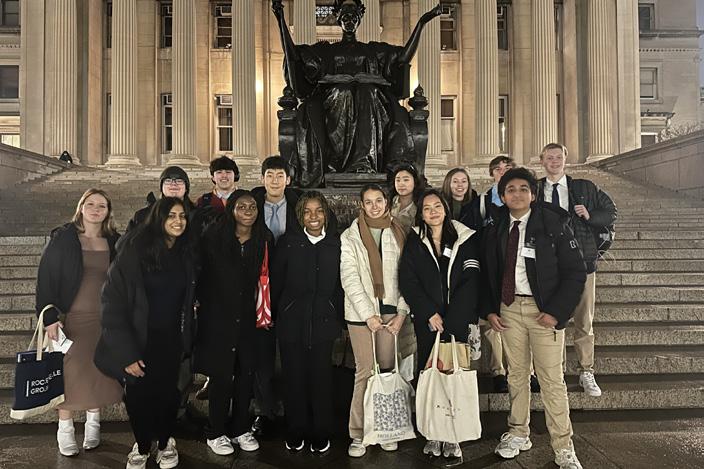
up the idea of using communal art as a way to reflect which started the planning process. Then, the team spent over a month organizing the event, with intense planning in the final two weeks leading up to the day. From the list of possible exhibits, the team settled with four activities they intended to execute.
“We knew Tarana Burke was coming and most likely going to talk about her work with the Me Too movement as a Tom Ruth speaker, and this became the spark for our inspiration to talk about social movements more broadly and analyze how society changes over time,”
The DEI Council played a key role in shaping the day’s activities, as they wanted to create something that would resonate with everyone. The idea of using art to reflect on social change felt like a way to bring people together in a meaningful way.
One of the activities, “Threads of the Fu-
ture”, invited students to write their hopes and wishes for the future, which were then hung on string lights in the library. Khong originally wanted to create a ‘wishing tree’, but the snowy weather made it hard to accomplish.
Articlecontinuedonpage2
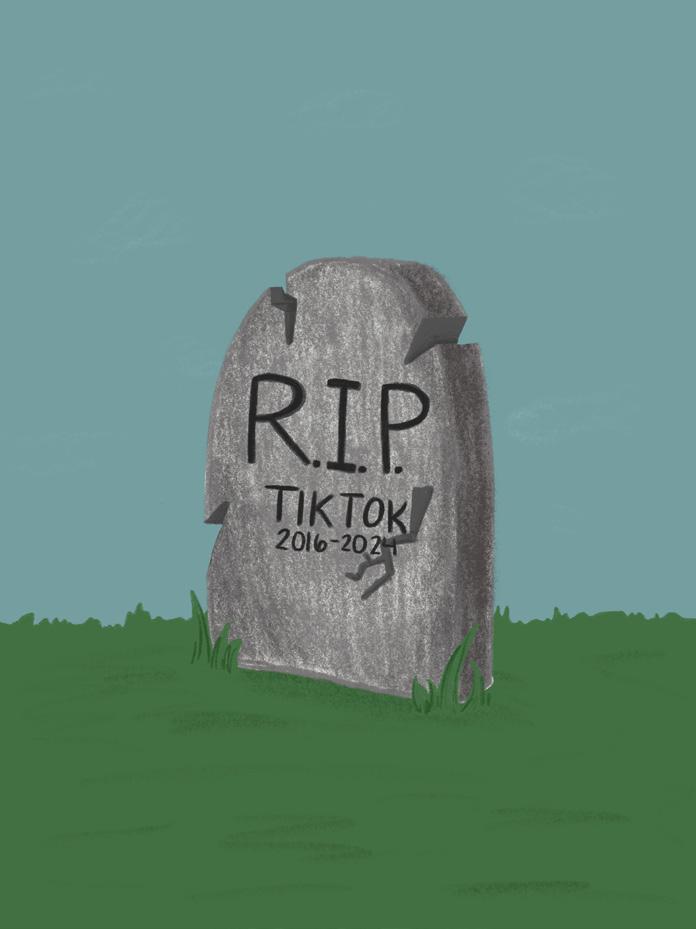
- Eric Khong, Dean of Equity and Inclusion
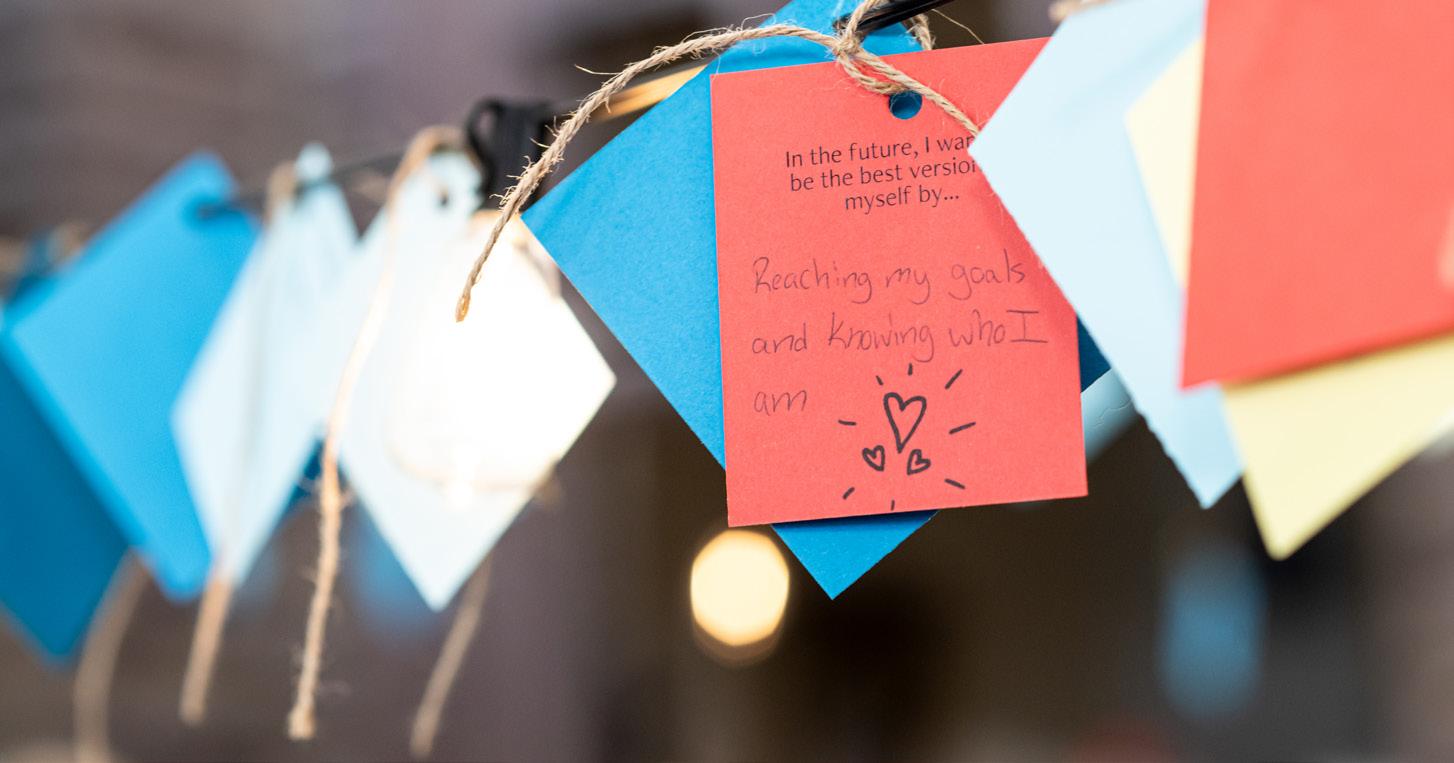
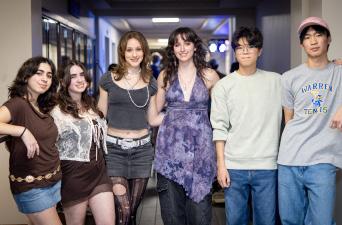

By BODIE LANNING ’28
STAFF WRITER
The Hill Model UN club took two recent trips to major competitions at both Columbia University and Cornell University. In January, members of Hill’s Model UN club traveled to Columbia University for CMUNCE XXIII, a Model UN conference. Likewise, the club travelled again to Cornell over the weekend of April 11. Leading the both trips was Kevin Tkachuk, McNally Chair of History and Social Sciences Department, who has been the faculty adviser for Model UN for the last seven years.
A four-day conference, held from January 16-19, students prepared several weeks in advance, building their case and preparing position papers. Sahith Mangu ‘28, one of few 3rd formers chosen for this trip explained, “The team is filled with dedicated and passionate people. We all really do our best to prepare because we’re passionate about what we do.”
Each year, the Columbia Model UN conference attracts around 750 delegates from around the world, accounting for the large crowd of delegates students saw when they first entered the conference room. This Model UN conference is “one of the largest and most prestigious Model UN conferences,” Tkachuk stated.
During the competition, students took on the role of delegates to debate global issues and draft resolutions. For example, Mangu competed in one of the Crisis Committees and was asked to take on the role of General
James Hartley, the United States General. In this role, he was tasked with figuring out how Artificial Generalized Intelligence can be used in the military and in healthcare.
“It was a really cool experience to spend a weekend with so many people from so many different backgrounds in an academic environment. Especially since we live in a time where diplomacy is so important, it’s nice to know that so many young kids are passionate about it.”
-
Srindhi Pasumarthy ’26, President of the Hill Model UN club
Between sessions, the students explored New York City, relaxed in the hotel, enjoyed meals with the team, and spent time with their competitors. “I really bonded with my team,” Mangu said. Mangu also noted the comradery between students from across the nation, remarking that even though they would share meals together, “at the end of the day we were competing against each other, but we also really bonded with one another.”
Srinidhi Pasumarthy ‘26, Model UN President, also celebrated the community building during the competition.
“We had such a unique group from 6th formers to 3rd formers who made new friends not just within our Hill community, but also in a broader sense with so many different people attending the conference,” Pasumarthy said.
After four days of competition, the students returned to campus, where
they look to begin preparation for CMUNCXXIII at Cornell University. Students responded positively to both events.
“It was a really cool experience to spend a weekend with so many people from so many different backgrounds in an academic environment,” Pasumarthy said. “Especially since we live in a time where diplomacy is so important, it’s nice to know that so many young kids are passionate about it.”
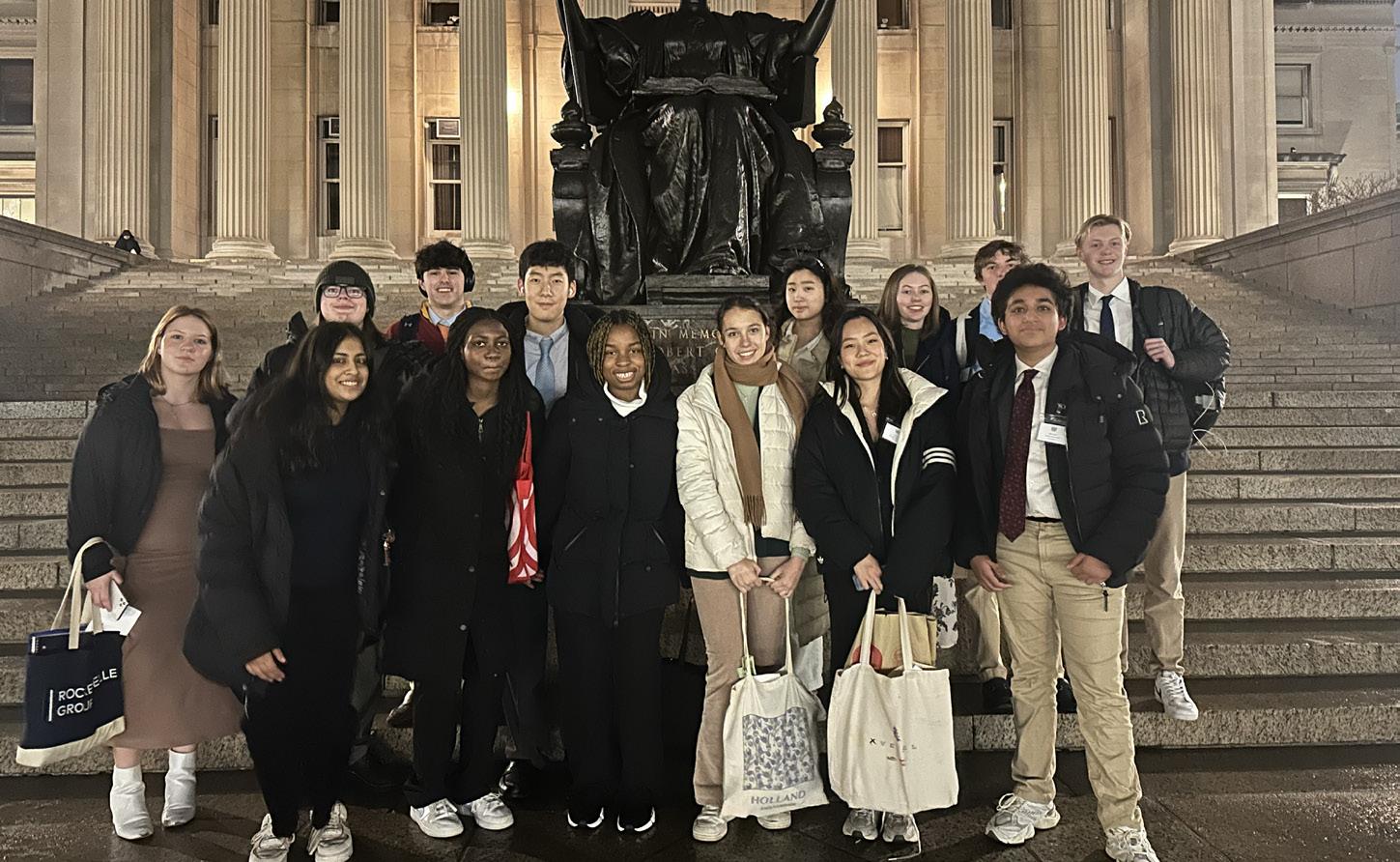
CHELSEA LEE ’27 STAFF WRITER
During the winter long weekend, many of our Hill arts students performed at Disney Springs at Walt Disney World in Orlando, Fl. These students are from the orchestra, jazz ensemble, vocal ensembles, tones and trebles, and dance programs. Alongside the performers, many international students also attended the trip.
“[The trip] was a good way to meet people that I’ve never talked to before and get to know them better.” - Abby Burkart ’27, member of the Hill Trebles
Though the students’ days had many earlier starts, from a 3 a.m. wakeup on Saturday morning for a 7 a.m. flight to an 8 a.m. departure on Monday for performances which left them tired at the end of the day, students enjoyed their time at the various parks.
“It was extremely fun for the first few days, but by the end, we were all exhausted from the long days,” Bella Luo ’27, an orchestra member explained.
Upon arrival in Orlando on Saturday morn-
By LULU ZHOU ’26 STAFF WRITER
Articlecontinuedfrompage1
“The DEI Council helped pivot to this indoor exhibit, where instead of one tree, it was a criss-crossing series of string lights in the library that acted as the ‘base’ for our wishes,” said Khong.
The exhibit “A Thousand & One Hands”, allowed students to design a tile that represents their identity.
“A Web of Connection” included a web created by strings of yarn that represented students and faculty and their experiences and aspirations.
“The Photography Story Booth”, was a station where students could write down their story and take a photo either alone or as a group.
Khong explained, “All the exhibits [were] meant to highlight that we are
ing, students traveled to Magic Kingdom, where they were able to explore the park until 8 p.m.
Each day, students were given a $30 Disney Dining Promo Card for lunch, dinner, and any snacks they wanted throughout the day. Though many encountered long lines especially for Magic Kingdom’s most popular rides, Space Mountain and the new TRON Lightcycle/Run, they spent the wait time talking with fellow Hill students.
Hill Trebles member, Abby Burkart ’27 shared, “[The trip] was a good way to meet people that I’ve never talked to before and get to know them better.”
Following the “Happily Ever After” fireworks show on Main Street, students headed to the newly opened Universal Stella Nova Resort, to prepare for the next day at Hollywood Studios. On Sunday, the buses left at noon which gave students the freedom to hang out in the pool, do homework, or work out in the fitness center after breakfast before spending the afternoon at the park.
Mardelle Zhou ’27, a dance student, said, “My favorite park was definitely Hollywood Studios because of the number of scarier rides. Tower of Terror was the best since I’ve never been on anything like it.”
Monday was a more complicated day for the group as performances at Disney Springs were spread out throughout the day with orchestra at 10:30 a.m., jazz ensemble at 12:15 p.m., vocal ensembles at 1:30 p.m., and the dance company performing at 3 p.m.
Outside of their performances, students were able to explore Epcot, with many
a part of something bigger than us.”
Khong believed that “because we live in a big community, it is important that we have decency, respect, tolerance, understanding, grace, kindness, and so much more towards each other.”
The day culminated in the Tom Ruth Speaker Tarana Burke, who spoke about the origins of the #MeToo movement and the importance of collective action in creating social change. Burke tied her talk to the themes of the day, emphasizing the need for courage, empathy, and persistence in the fight for justice.
A major takeaway from Burke’s talk was that social change is supposed to be uncomfortable because it is often not easy to be someone standing up for what is right when it seems like you are against the world.
Many students reflected on
scrambling to join the Guardians of the Galaxy virtual queue at 1 p.m. Meanwhile, international students spent the whole day at Epcot and some grew tired, despite the fun.
“It was so fun.
I
real-
ly loved that we could just explore and have fun.”
- Isie Haberland ’28, member of the Hill orchestra
Nicole Cheng ’27 expressed, “There was too much walking. We were out having fun the whole day with little to no rest and as international students that weren’t part of Hill arts, [we] were just roaming around the park as the others performed.”
Nonetheless, overall Hill students enjoyed the trip to Disney. “It was so fun. I really loved that we could just explore and have fun,” Isie Haberland ’28, an orchestra member, exclaimed. “Overall it was a great bonding experience and brought everyone closer together,” Burkart added.
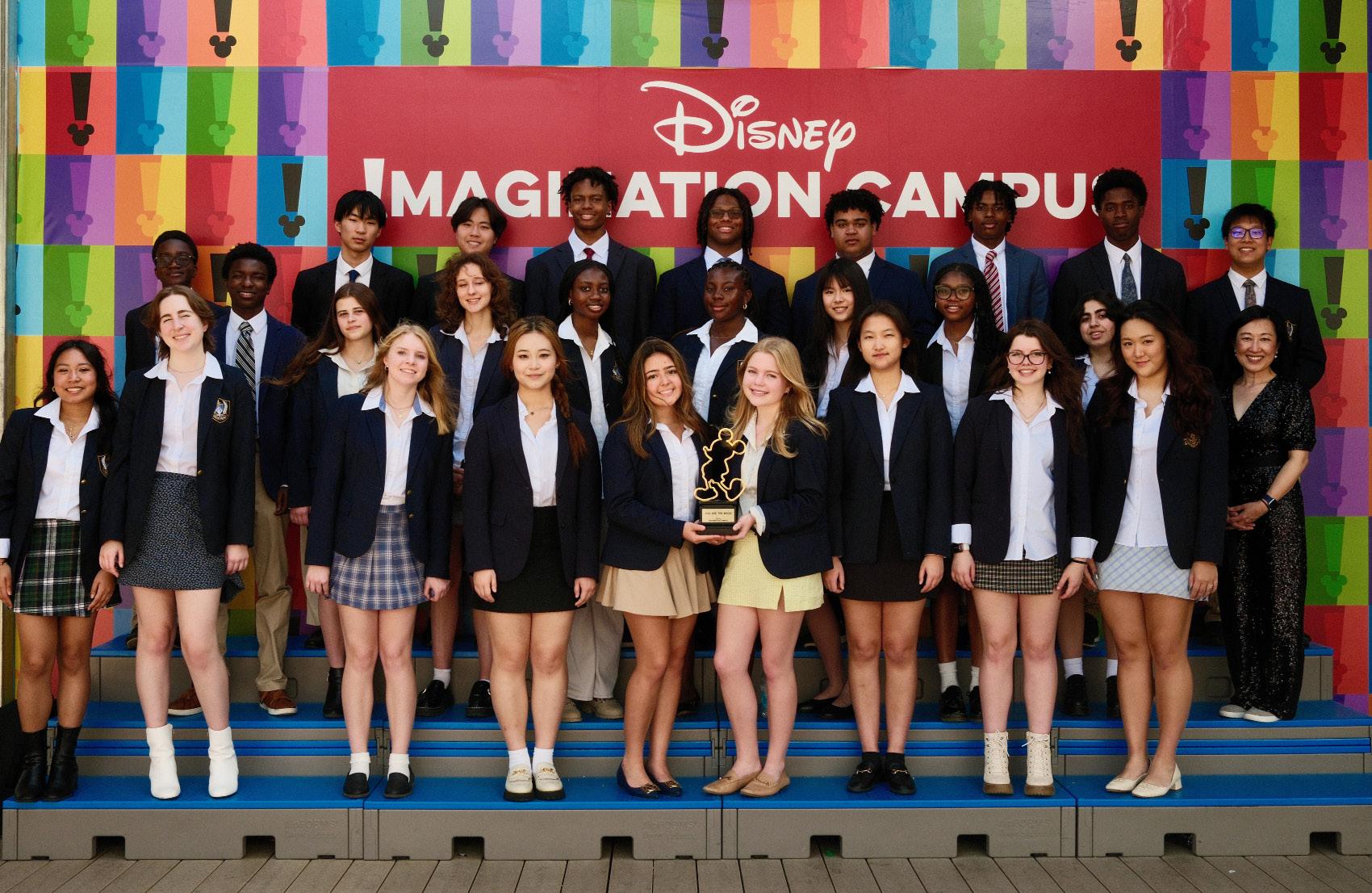
her talk and stepped forward to ask meaningful questions. Students praised the day’s programming for its thoughtfulness and inclusivity, and many enjoyed the incorporation of art and interaction in MLK Day’s programming.
Ramsay Stallings ’25 said, “the art exhibits were a great way to engage and interact, and Tarana Burke’s speech gave us a lot to reflect.”
Looking forward, the DEI Council is planning many more events at Hill, including activities for Women’s History Month, the second Block Party, and International Weekend.
As the Hill community remembers this year’s MLK Day, especially during this past Black History Month, the continual effort of equity and inclusion is still ongoing, and each of us is an important part of it.
With its blend of art, interaction,
and inspiration, the 2025 MLK Day programming left a lasting impact, reminding students that they are more than themselves, and should
continue to think about how to be responsible for their community they live in.
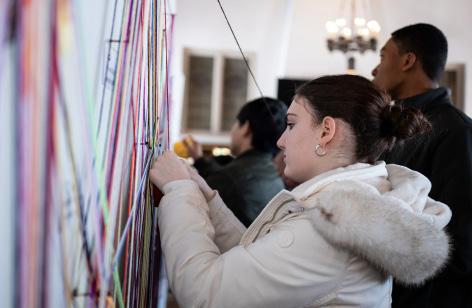
By VICKY ZHANG ’26
EDITOR
Beginning on the evening of Jan. 7, the Palisades and Eaton wildfires began to burn rapidly across Greater Los Angeles. Today, the fires are still regarded as some of the deadliest wildfires in California especially in relation to property destruction. Beyond their immense environmental impacts, the wildfires socially impacted humans by displacing people, obliterating homes, and destroying many public spaces.
Near Altadena, the deadly Eaton fire had burned over 14,000 acres across multiple mountainous communities by the middle of January. In addition to those being displaced and evacuated, many people had to deal with the mental burden of an erupting fire that inched closer and closer to them.
One high school junior from Glendale recalled, “Mentally, I was terrified because you don’t really think something like this would ever actually happen to you. Between watching the news all day and seeing all the updates from watch duty, I honestly was too scared to fully go to sleep. I had alarms set for every hour in the night so I could wake up and check the status of the fires.”
From losing sleep to being constantly consumed by fear, many people dealt with the turmoil of the fires from afar. For many, it was difficult for them to find time to rest or relax knowing that the fire could destroy their community at any time.
Similarly, the Palisades fire, which burned over 23,000 acres, erupted through the Pacific Palisades community and headed toward Malibu. The fire quickly spread, with tens of thousands of people being forced to evacuate. Significantly more destructive than the Eaton fire, many people lost all their possessions and belongings as they fled the area. Beyond the immediate impact, people as far as Thousand Oaks began to feel the psychological impact of the fire.
While Thompson was a considerable distance from the fire, she was already prepared to prepare to evacuate if ordered to do so. It left her with a mental burden of having to leave everything she owned behind. It made her think, “If my house goes up in flames, what am I going to bring? There is nothing that can com-
pletely replace all the memories my belongings hold. After moving frequently, this house has come to mean so much to me. If the fire burns through my town, what am I going to do?”
Within the Hill community, Caoilin Thompson ’25 claimed that her mental stress increased as “I couldn’t be at home to support my family. I was also worried since my parents had all of our things packed because we were originally going to have to evacuate but thankfully the fires stopped before they got too close to our house.”
Even being far away from the fires physically, Thompson grew more worrisome for her family as the fires continued to spread. In fact, not being in the Palisades area in person increased her stress as she did not know how the conditions were changing.
“I couldn’t be at home to support my family. I was also worried since my parents had all of our things packed because we were originally going to have to evacuate but thankfully the fires stopped before they got too close to our house.”
-Caolin Thompson ’25
In order to keep Thompson up to date, she described, “I would get sent pictures from my parents, and the sky by our house would be orange no matter the time or day, and the ash even reached our house.”
Even though Thompson was not able to do anything physically, she continued to remain vigilant and informed on how the wildfires were affecting her family and friends. Therefore, it created a more amplified sense of stressfulness as she had to continue to navigate life at Hill.
In terms of the physical impacts, Thompson believes that the raging fires will have a longterm physical impact on the Los Angeles communities due to the extent of their destruction.
In particular, Thompson said, “It’s going to take years to rebuild the Palisades and all the houses and damage to the areas affected, I mean
Pali High School burnt down to the ground and I feel awful for all my friends that go there that they basically have to do school like we did during Covid and can’t even enjoy their campus.”
With many schools and commercial areas burning down, people will need to adopt new ways of living as well as find alternative places to stay. Even institutions, as Thompson mentioned, will have to seek new ways of teaching students while they find ways to find funding and eventually rebuild. Beyond that, many students will likely suffer the mental impacts of temporarily adjusting to virtual learning as they wait for the rebuilding of the physical campus.
Although the Los Angeles wildfires were extremely destructive, many local communities have come together by creating funds, offering services, and hosting concerts, to raise money for restoration.
Angela Ando, a student in Glendale said, “In one of the shops that I frequently go to, there were a few racks that had free clothes for those affected by the wildfires, and I just loved to see how supportive peo-
ple have been. I’ve seen so many images and videos on the news where many places are just flooded with volunteers and donations.”
Los Angeles communities have demonstrated that while the wildfires may have displaced and significantly impacted many people, they are a supportive and resilient community that can come together during difficult times. While it may take years for the Pacific Palisades and Altadena communities to bounce back, they are doing so as a collective unit.
Collective trauma will continue to rest with L.A. area communities as they put burned buildings behind them and build toward a newly renovated home for all. The weight of natural disasters is heavy, and the families affected will undoubtedly see the memories of flames passed down for generations to come, working toward proactive solutions for the environment and improved reactive measures for future incidents.
As Thompson said, “In a tight-knight community, you are dealing with other people’s trauma [from the wildfires] and thinking about others having to deal with their homes.”

By ETHAN RYU ’26
For the first time in 132 years and the second time in the history of the US, Donald Trump has been elected to two non-consecutive terms as president. The 2024 electorate saw all 50 states shift rightwards, indicating the effective rhetoric of Republicans on the issues of economic policy, immigration, and crime that Democrats largely glossed over. Following on these promises and principles, Trump has spent his first week back in the Oval Office with a flurry of executive orders, press conference statements, and monumentous proposals for the future of the US.
On Monday, Jan. 20, Trump was sworn in as the 47th US president alongside JD Vance as vice president. In his inaugural address, Trump pledged to Americans, “We will be prosperous, we will be proud, we will be strong, and we will win like before. We will not be conquered, we will not be intimidated, we will not be broken, and we will not fail.”
26 executive orders were signed in the afternoon, including a declaration of national emergency at the southern border, pardons for around 1,500 Jan. 6 rioters, withdrawal from the World Health Organization and Paris Climate Agreement, renaming the Gulf of Mexico to the Gulf of America and easing restrictions on oil and gas production. 78 actions from the Biden Administration were revoked, and federal agencies were directed to interpret “sex” solely as an immutable binary biological classification determined at conception.
Tuesday saw another full and unconditional pardon given to Ross Ulbricht, creator of Silk Road, a darknet market that facilitated trade of illegal services such as narcotics.
All government DEI staff were put on paid leave and designated to be terminated within 60
days. Additionally, Trump announced Stargate LLC., a $500 billion AI startup led by SoftBank’s Masayoshi Son and OpenAI’s Sam Altman. Elon Musk expressed doubt in the venture in a tweet, writing, “They don’t actually have the money.”
On Wednesday, Trump called on Russia on X, formely known as Twitter, to “Settle now, and STOP this ridiculous war” with the threat of sanctions. He relinquished security protection to his former Secretary of State Mike Pompeo and his former National Security Advisor John Bolton. In his first major presidential interview, Trump suggested intentions to prosecute Joe Biden for unsubstantiated accusations of benefitting from his family’s morally grey business deals.
In various speeches, Trump mentioned his policies of large tariffs, as well as the idea of annexing Canada. Seattle Judge John Coughenour blocked Trump’s executive order to ban birthright citizenship, calling the order “blatantly unconstitutional.” Finally, as he had promised in his election campaign, the President declassified documents relating to the assassinations of John F. Kennedy, Robert F. Kennedy, and Martin Luther King Jr.
At the end of the week, large deportation flights of undocumented immigrants were carried on C-17 cargo planes, the first effective signs of Trump’s strict immigration crackdown. Anthony Fauci, leader of the US’ COVID-19 response, had his government security detail revoked, and Trump travelled out of DC to California and North Carolina.
In comparison to his first term, several executive actions marked a departure from former policies. Trump now had a focus on energy exports (oil, gas, and coal) rather than domestic production, escalated deregulation by mandating ten regulations removed for one added, and heavily increased tax and tariffs on foreign trade, such as the 25% tariff on Canadian and Mexican imports. These actions underscore Trump’s plans of economic nationalism and
government efficiency for the next four years.
Though the tariffs have been postponed for a third review in early April, tensions are still high, especially between Canada and the US. At the 4 Nations Face Off Hockey Tournement, Cananda secured the victory in overtime. Justin Trudeau, the former Prime Minister of Canada said in response, “You can’t take our country- and you can’t take our game.”
A number of similar incidents of high tension have occurred continuously in the months since Trump’s inauguration, many of which have centered around the divisive Ukraine War. The President’s various remarks surrounding the conflict have ranged from complimenting Ukrainian leader Zelensky’s leadership to implicating Ukraine in the war’s
origin, leaving many across the world uneasy. The chaotic, disunited messaging of his term thus far can be seen here as well as its effects of confusing both allies and enemies alike. In choosing fights to pick just a few months into his presidency, Trump has found targets not just outside American borders but within its own judicial system. A scuffle fought in courtrooms and over cable television has pitted Trump against Judge Boasberg, culminating in a call for the Judge’s impeachment and rebukes of such a claim by a Supreme Court justice. Coverage of this altercation has often included worries of a Constitutional crisis, representing continued nationwide sentiment concerned with presidential expressions of power.
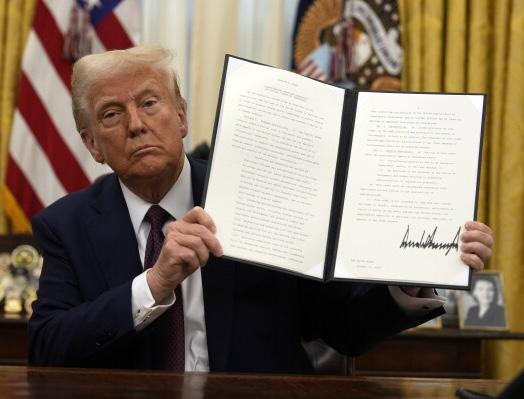
ELVA CHENG ’26 STAFF WRITER
Following TikTok’s ban earlier this year, avid TikTok users desperately sought alternative platforms. One such platform, RedNote – a Chinese social media platform originally known as Xiaohongshu – emerged as a popular choice.
TikTok, known for its engaging short-form content, has been a widely used platform among adolescents and adults. With the loss of TikTok, many turned to Red Note as a possible alternative, hoping to discover a similar experience.
While TikTok is largely built around fastpaced, trend-driven videos, RedNote sees an emphasis on community building and lifestyle content. Users on RedNote often connect through shared interests, such as sports and daily experiences, shared via a variety of short clips, longer videos, and written content with images. Unlike TikTok’s design, being directed to a broad international user base, RedNote is more catered towards users in Asia. Despite these differences, both platforms share key features, including integrated e-commerce tools that allow users to tag products in posts – a feature both apps have used for streamlining creator-driven commerce.
The sudden surge of former TikTok users on Red Note led to the coinage of the term “TikTok refugees.”
“More than 700,000 new users have joined Xiaohongshu,” per a CNN article.
Given its scale, this migration has sparked interesting cross-cultural interactions. For instance, Chinese students sought help with English homework, while TikTok refugees took the opportunity to practice Mandarin. In response, many creators on RedNote began to post more English content and adding subtitles
to accommodate new users. The platform has also enhanced its translation features to match.
Many Hill students also experimented with RedNote amidst uncertainty over TikTok’s ban.
Cecelia Diprinzio ‘27 downloaded Red Note after a friend’s suggestion but found it lacking.
“I did not like Red Note, it just wasn’t the same as Tik Tok, because there weren’t the same users or the same type of videos,” said Diprinzio.
However, Diprinzio acknowledged that spending more time on the platform might change her opinion.
Prior RedNote users at Hill shared their opinions regarding the rise in Red Note users. Yvonne Bao ’25 started using the platform in 2020 during quarantine.
“I usually like to watch content about pets or daily vlogs,” said Bao.
She noted that she was not pleased with the influx of TikTok users, as it has unexpectedly altered the content appearing in her feed.
“I did not like Red Note, it just wasn’t the same as Tik Tok, because there weren’t the same users or the same type of videos.”
-Cecelia Diprinzio ’27
Similarly, Derek Zhang ’27 compared RedNote to Pinterest.
“RedNote has more features than TikTok,” said Zhang.
He added that he found the presence of TikTok refugees amusing but doubted their longterm commitment, as the platform’s user base remains predominantly Mandarin-speaking.
The differences between TikTok and Red-
Note go beyond content styles and language. RedNote has positioned itself as a platform focused on lifestyle and commerce, attracting influencers who specialize in beauty, fashion, travel, and wellness. This contrasts with TikTok’s broader appeal, which includes a mix of comedy, dance trends, and viral challenges. While TikTok thrives on spontaneity and virality, RedNote fosters a more curated and intentional sharing experience. This structural difference
their content consumption habits were shaped by TikTok’s rapid and unpredictable nature. With the TikTok Ban now on hold, many users have reverted to their original platform. While RedNote and TikTok remain distinct, the temporary migration from TikTok facilitated unique cross-cultural interactions that had been previously unexpected. The TikTok-RedNote phenomenon is just one example of how digital landscapes can shift overnight, proving that social media is as much about communities that inhabit it as it is about the platform itself.

By ABIGAIL RICE ‘26 SOCIAL MEDIA MANAGER
We gather here today not only to mourn but to celebrate the life of our beloved friend, TikTok.
From its birth on that fateful day in September 2016 in China, TikTok was already positioned as the successor to Music. ly, an ambitious child primed for greatness. And greatness it achieved. TikTok quickly developed to be a global cultural phenomenon, with millions of fans dedicating hours chasing him.
In its brief yet meteoric existence shared with us all, TikTok became not just an app, but a way of life. It shaped cultures, dictated trends, and redefined the very nature of time-wasting.
Now, TikTok joins his lifelong companions, Music. ly, Vine, and Omegle, in the digital afterlife. TikTok is survived by his devoted sibling RedNote, its estranged and constantly jealous cousins Instagram Reels and YouTube Shorts, and the countless individuals worldview who once and will forever dependent on him in their daily lives.
Unfortunately, on Jan. 19, Tiktok’s health took a critical hit when the United States government deprived him of the very sustenance keeping him alive. As his heart started to slow to a stop, he made startling confessions, though these only hastened his decline. Placed on life support, doctors have advised that his time was limited, with his final moments predicted for some time in June. Yet, all of his followers remain steadfast as his death turns into a generational crisis. In accordance with TikTok’s final wishes, his obituary is released ahead of time to quell the unrest of his grieving supporters.
Born in the age of Doomscrolling, TikTok was a companion of our designated hours of digital escapism. His absence will definitely be deeply felt, his icon missing from our app stores, his algorithm no longer curating the infinite scroll of entertainment and distraction. TikTok was more than an app – he was a source of joy, an architect of entertainment, and an unrelenting supplier of dopamine. He sponsored many endeavors enjoyed by all: Renegade, Savage, Blinding Lights, and Espresso.
More than just entertainment, TikTok connected people across the world, particularly during the isolating days of the COVID-19 pandemic. He provided us with the baked pasta recipes we never made, whipped Dalgona coffee we now hate, DIY projects we never finished, and financial advice we probably should not have taken.
Though some will point to concerns over mental health, misinformation, and espionage, we choose instead to remember the highlights of his life: Charli D’Amelio’s meteoric rise, the era of VSCO girls, James Charles’ controversies, and the unexpected resurgence of The Backyardigans’ “Castaways.”
Though TikTok never married, he is far from alone. His most devoted followers, now self-proclaimed “TikTok refugees,” have united under the banner of the People’s Bid for TikTok, a movement dedicated to his revival. The government has vowed that should a benefactor step forward to fund Tiktok’s medical neces-
sities, his presence may be salvaged. Among the potential saviors rumored to be considering this monumental purchase are MrBeast, Jesse Tinsley, Amazon, Kevin O’Leary, and Microsoft. As we celebrate TikTok’s life, we hold out hope for his revival.
TikTok leaves a lasting legacy of his persistent, alluring notifications, the worry of liking someone’s post from 2018, and the fleeting hours of watching the same trend one-hundred more times. TikTok pushed passed the bounds of social media, empowering anyone to gain their fifteen minutes of fame. Though TikTok’s life will probably come to an unfortunate end soon, his algorithm and global success will never be forgotten.
So let us take a moment of silence—not too long, lest we feel the need to check our phones—and reflect on the joy TikTok brought us. The hashtags may fade, the trends may die, but the memories will live on forever.
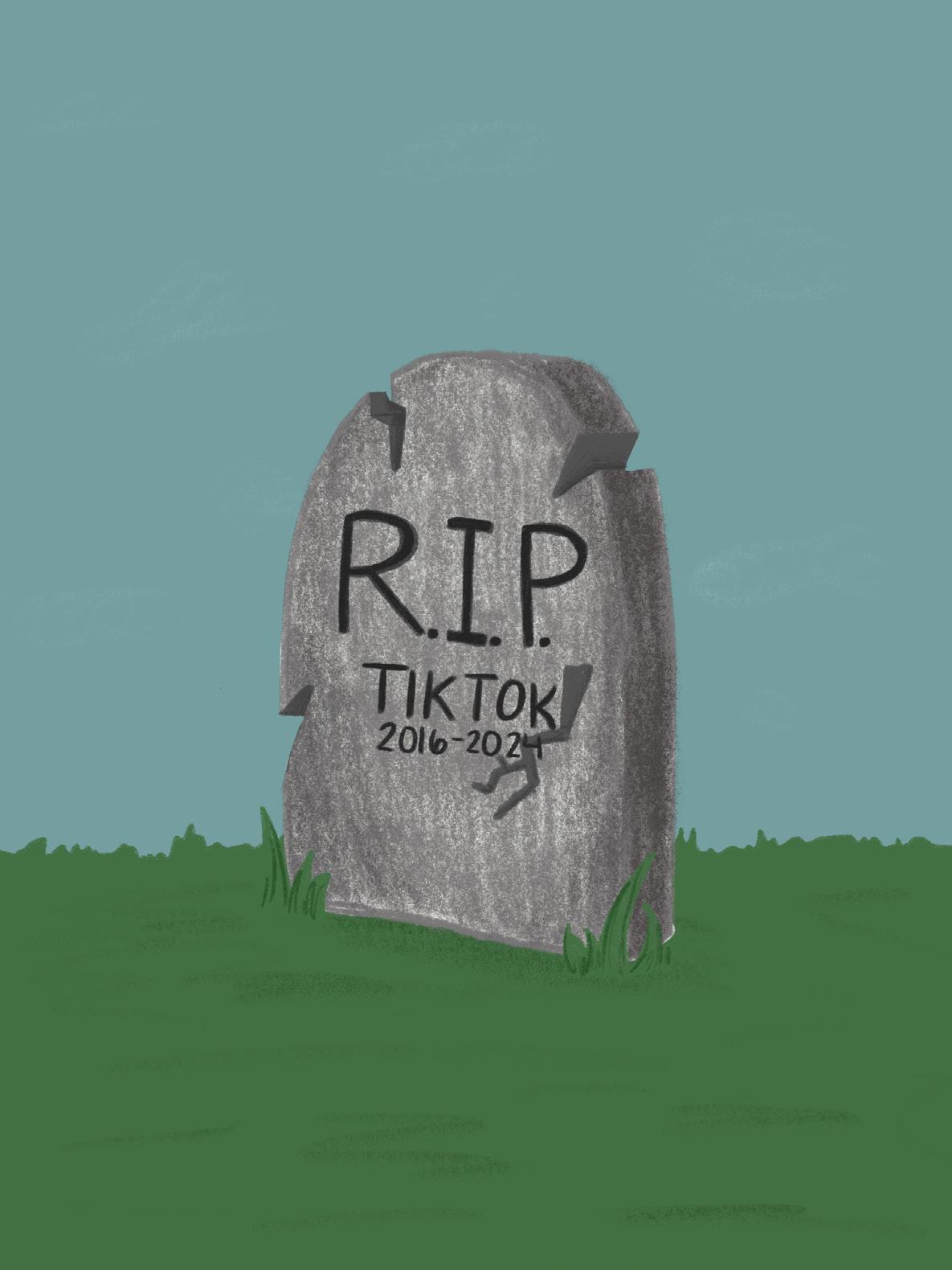

By ARKADI BINDAR ‘26 STAFF WRITER
Given the recent uncertainty surrounding the future of TikTok, student opinion has split on the efficacy of the social media platform’s potential ban. Beginning Jan. 19, public discussions surged nationwide following the temporary ban of TikTok. After years of speculation about its potential prohibition, popular social media app TikTok was briefly banned and unavailable for users within the country. However, before most people could even react, access was restored just one day later.
Concerns remain about this regained access after a potential ban was again threatened to take place on April 5. However, a 75-day extension was soon put in place, pushing back the second potential ban well into June — a bad start for summer break.
“I’ve
used both TikTok and
Instagram Reels. They are the exact same, you will see what your algorithm wants you to see. It doesn’t matter where you doomscroll, just like move on.”
’25
The app, originally launched in China as Douyin in 2016, expanded globally after ByteDance acquired and merged it with its international anagram Musical.ly in 2018. This acquisition ported a Chinese app over to the rest of the world, despite being previously inaccessible. Criticism of TikTok has often focused on its connections to the Chinese
government. During the 2019 Hong Kong protests, the platform was accused of censoring content related to the demonstrations, raising concerns about the influence of the Chinese Communist Party over ByteDance.
Additionally, due to notorious public surveillance in China, Bytedance, and by extension TikTok, is required to provide access to user data to the Chinese government upon request, which it actively did for users of the app during the Hong Kong protests. Similar concerns led India to ban TikTok in 2020 over potential risks with foreign interference and data security.
In 2020, then-President Donald Trump had planned to ban the app, but the endeavor was halted by the subsequent Biden Administration. Later in 2024, Biden passed an ultimatum to Bytedance: sell the app to an American company or face prohibition. TikTok was not sold and faced the ban for two days until current President Trump extended their sale deadline until the latter half of April.
Student opinion on the TikTok ban remains divided. Constantine Kontes ’25 expresses support for the ban.
“I think our country’s safety should be our priority. There are so many similar apps to TikTok all over the place that we don’t need the one that sells our data to China,” said Kontes.
Other students shared varying perspectives. Gabriel Bak ’25 was indifferent. “These apps are all the same, it does not matter at all. If it gets banned just watch something else,” Bak said. “It’s not that difficult.”
Jaewan Lee ’25 similarly echoed the sentiment. For Lee, uncertain times call for flexibility.
“I’ve used both TikTok and Instagram Reels. They are the exact same, you will see what your algorithm wants you to see,” Lee said. “It doesn’t matter where you doomscroll, just like move on.”
Some students questioned the ne

cessity of the ban. Axel Lindquist ’25 thought the ban was unneeded and placed unnecessary restrictions on users.
“These apps are
all
the same, it does not matter at all.
If it gets banned just watch something else. It’s not that difficult.”
-Gabriel Bak ’25
“We don’t really have proof that they’re selling anything to China. And if they are, why can’t like the government seize it or sell it in auction? Banning it just
seems too extreme,” added Lindquist. Kontes thought otherwise, contextualizing the current debate within are larger geopolitical struggle.
“We are in a head-to-head race with China,” Kontes said. “They have such an upper hand against us if they have all of this data on everyone who uses it. If people really care about the U.S. being safe, they’ll just move on to a different app, if they’re still even using TikTok now.” Jason Micklei ’25 agreed with Kontes, extending worries about online privacy.
“I don’t know, if they’re going use this info against us,” Micklei said. “I don’t want them to have easy access to it.”

ILLUSTRATION BY LILLIAN CHENG ’27

ANAIKA BANDI ’27 STAFF WRITER
While Hill students are most often prided for their academics or athletic ability, it is undeniable that some of the most awe-striking aspects of the students at Hill, and by extension the Hill school itself, are their skills and dedication to the arts.
It is not a coincidence that the audience is full whenever any student performance is held, no matter the art form or location.
It was during one of these concerts that the wider Hill community was introduced to the two student-made bands here on campus: TST and D1. Both bands performed a set list to open for the student band, showing off the songs they have been working on throughout the year.
While I, like most of the Hill community, was thoroughly impressed with the performances put on by the talented students that night, I was also fortunate enough to sit in on their final practices before the show and got a look at the band’s process, which I found to be notable in its own right.
The first thing I remember when I went to the TST practice was how comfortable the musicians seemed with each other and their set list. The band was confident in both their knowledge of their songs and their abilities, and it stuck to me how dedicated each member was to practicing and doing their best for the show. It was also apparent that the members genuinely got along and that their relationships with each other were only strengthened by being in TST.
When they started playing the songs on
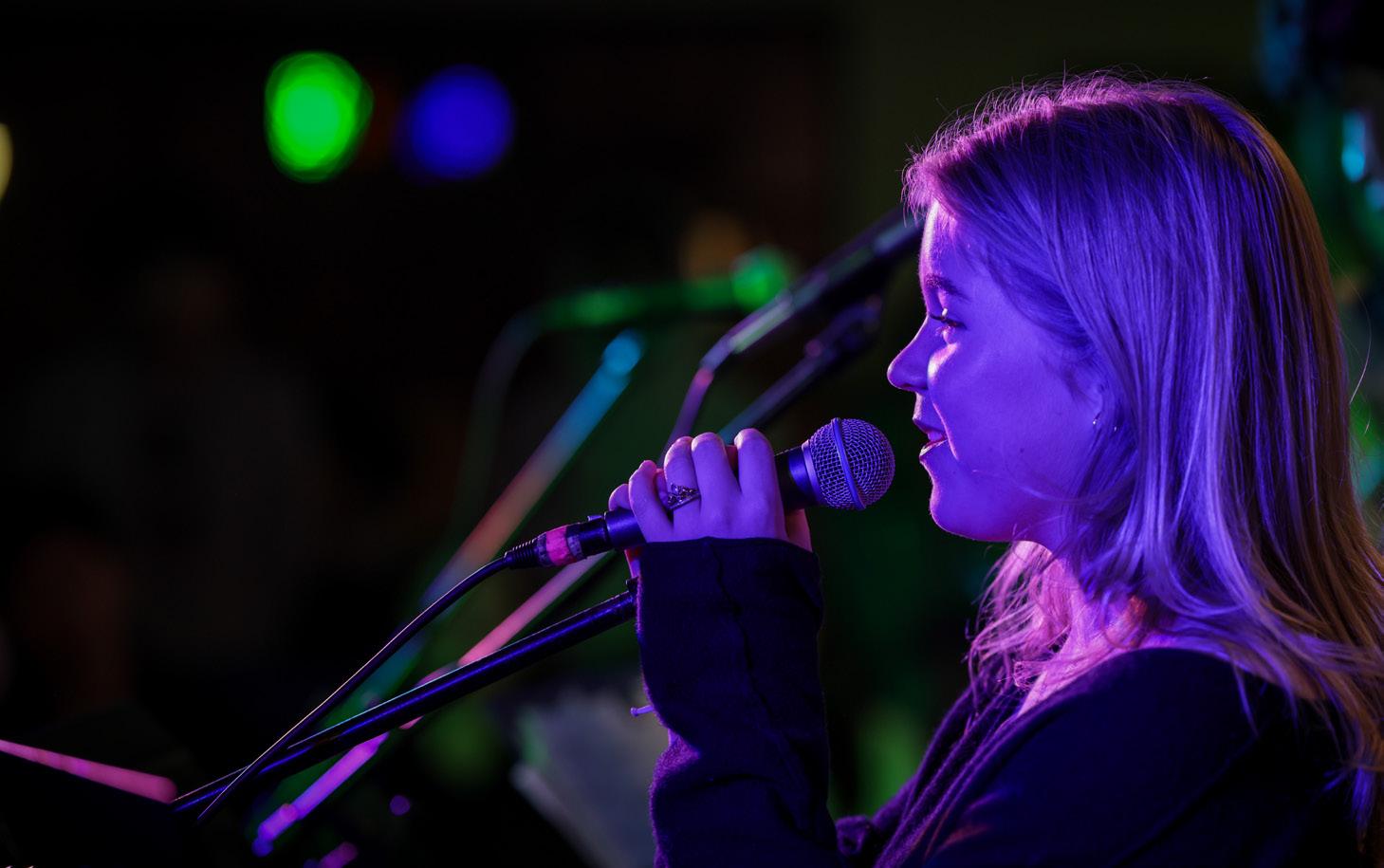
their set list, it struck me how different the music TST played sounded from the original tracks. By adding extra instruments and vocals to their songs, TST manages to give their set a unique twist. The unique style of their music brought a nostalgia for beloved songs while making you feel like it is your first time listening to them which brought a bright, fresh energy and made for a perfect opening to the concert.
D1 held their practice right after TST’s, and the contrast between the two bands was immediately apparent. Opposed to TST, D1 stuck close to the original songs that they were covering for the concert. However, this is not said to make out the band to be lesser, as D1 captures the essence of these songs perfectly in their performance. After enjoying the first track being practiced, I was surprised to
see the members switch the instruments they were playing in the first song during their performance of their second song. The musicians of D1 are incredibly skilled, and they proved this through their mastery of multiple instruments and their ability to switch so quickly and seamlessly from one to another. Although I was not able to stay for their entire practice, D1 still managed to make an impression on me, and that impression of them held up through their incredible performance at the concert.
Although it cannot be argued that Hill gives enough wonderful opportunities for it’s students to pursue the arts, the creation and performances of TST and D1, both student made projects show how determined, talented, and robust the kids who go to Hill are beyond academics and extracurriculars.

By RICHARD LIU ‘26 STAFF WRITER
“On
By OCEAN VUONG
“Ma, you once told me that memory is a choice. But if you were god, you’d know it’s a flood.” — Ocean Vuong, On Earth We’re Briefly Gorgeous
Ocean Vuong is a Vietnamese American author who reaches for the past by writing to his illiterate mother. Through Vuong’s gorgeous words, he evokes a childhood strife with American violence. Yet despite the violence, it is also filled with an American beauty. It comes in breaths, almost like a gasp for air. There are moments of quiet tenderness between a mother and son that shine through. He writes for her callused and blistered hands; he writes for a war that reverberates in the fireworks on the Fourth of July. He writes to heal from the unhealable wounds that come from the blessing of memory.
By ALICE MUNRO
What would you write about if you could write for life? Alice Munro writes lifetimes in her stories for life. Her short story collection Dear Life blossoms with a living vitality. Through a fleeting glimpse of her prose, her characters seem to hold an air of effortless familiarity, as if you have known them your entire life. She manifests the lifelines of these people through her writing and takes the reader soaring through every moment that defines them. In her story Amundsen, the book follows the story of a woman working with chronically ill children in the remote town of the same name. It takes the reader through intimate moments, like little warm lamp posts beset in a sea of darkness. Then, she transforms this story of compassion towards these children to one of a strange love and redirects the story as a natural simulation of real life. Her stories are a perfect replication of the branching pathways of life, which are often misleading, mysterious, yet still incredibly beautiful. In Munro’s words, meaningful things cease to carry the weight of their meaning, and the mundane begins to shine through and color the world and the people within it.
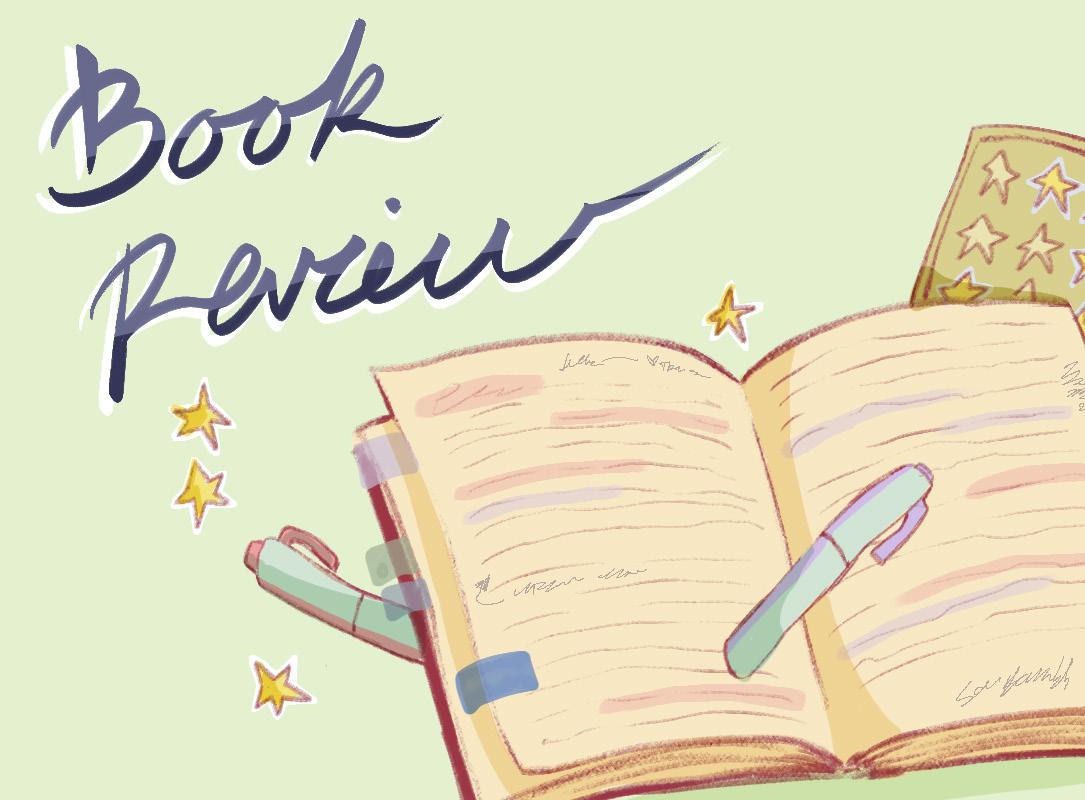
By FIONA SHEN ’25 STAFF WRITER
This poem is a simple poem on face value. It is exactly what the title describes, a recipe. Yet it is also infinitely mysterious with the mention of a certain “reality” that is kneaded within the bread. Through its evocative and vivid prose, the author raises questions towards not just the acceptance, but the embracing of reality. The poem is speckled with fascinating stylistic choices in grammar and layered with metaphor. It is raised in uncertainty and baked in a universal sense of reality that anchors its words to this world.
- Richard Liu ’26
sweep the steaming golden dawn like flour on the table top. drop the dough filled with doses of dopamine, knead with mighty grip, Wait for it to ferment in the yeast of time.
wash off stains shielding the essence of truth, chop into slices, examine in depth. each in various sizes and shapes, Yet all sweet and rich
filter the mixture of delusion and fantasy through a sieve cool the curd of truth on tall shelves where remains unscathed.
By GRIFFIN HOPPER ’26 STAFF WRITER
Donald Trump’s second, nonsequential presidential term constitutional experts have found it to be a turning point in American history. The first weeks of the government have shown not just a set of specific policy changes but also a methodical reconceptualization of presidential power deserving of close examination.
American democracy rests on a careful balance of powers dispersed throughout the several branches of government, a system painstakingly built to prevent the kind of power concentration found Today. Trump’s assault on executive orders points to a constitutional reconfiguration that methodically erases accepted limits rather than only policy execution.
His general amnesty of Jan. 6 insurrectionists—including those found guilty of violent assaults on law enforcement—represents a particularly alarming model. This deed goes beyond simple pity; it clearly emboldens political violence carried out in support of his aspirations. When such action gets presidential absolution, we create a dangerous precedent: buying into the MAGA cult makes you extralegally exempt from prosecution under the watch of Donald Trump.
The modern government is intensely hostile toward meritocracy. Though they evidently lack the necessary credentials, selections such as Pete Hegseth, who was chosen to serve as the Secretary of Defense, do not show unfortunate aberrations. Instead, it is pointedly a systematic replacement of competence with ideological allegiance. This tendency reveals a deliberate decline of our nation’s institutional capacity rather than merely ‘casual nepotism.’
Compare Hegseth’s choice with Lloyd Austin, his predecessor, whose decades of leadership experience at battalion, brigade, division and combatant command produced unri-
valed operational expertise. The way in which we now lower our standards of qualification suggests that our values in a leader are shifting. Political allegiance should be prioritized over governmental effectiveness—a departure from the measures taken toward supposed governmental efficiency. We are handing incompetent pundits the keys to the kingdom because they swore unwavering allegiance to a red baseball cap instead of our Constitution.
The administration’s intentional amplification of social division may be the most alarming. When executive orders label initiatives and research projects as “DEI,” they do so with a deliberately broad definition. For example, the National Science Foundation targets the words “women,” “victims,” and “disabilities” when looking at these projects that seek federal grants. This newly instituted policy is demonstrative of a very real threat toward even statutorily mandated protections of civil rights. Though there may be valid criticisms of diversity training techniques, or the selective nature of federal grants, the Trump administration’s approach is markedly not a critique of such practices, but an attempt at total institutional dismantling.
The intentional resurgence of nativist ideas— shown in the executive order opposing birthright citizenship despite clear constitutional clauses and court precedent—exposes a governmental ideology based on division rather than unity.
Trump’s conflicting approach toward Ukraine and his unambiguous support of Russian interests indicate a significant realignment of America’s geopolitical posture. This shift in focus could incentivize our traditional allies toward nuclear proliferation, should they think guarantees of American security depend wholly on the sways of presidential temperament. The government’s newfound belligerence toward longtime allies and the paving of paths for totalitarian governments accomplish little in
the way of ‘strategic decisiveness.’ Instead, haphazard attempts at diplomacy seem to prioritize getting along with heads of state rather than maintaining the best interest of our nation.
When navigating this newfound subversion of checks and balances, this mockery of established order, our collective responsibility exceeds the choice between red or blue. To preserve democratic institutions, we must protect what now appear to be tentative constitutional values: separation of powers, equal protection under the law,
edge, not blind servitude, blind obedience. Our national resilience rests on institutional limitations and an informed citizenry that can distinguish party differences from systematic challenges to democratic governance. Apart from its new, overreaching approach to legal procedure, the current government poses a fundamental threat to the constitutional system itself. We must demonstrate a robustly defensive position toward presidential actions that fall outside the realm of executive power, some even beyond the reach of reason.
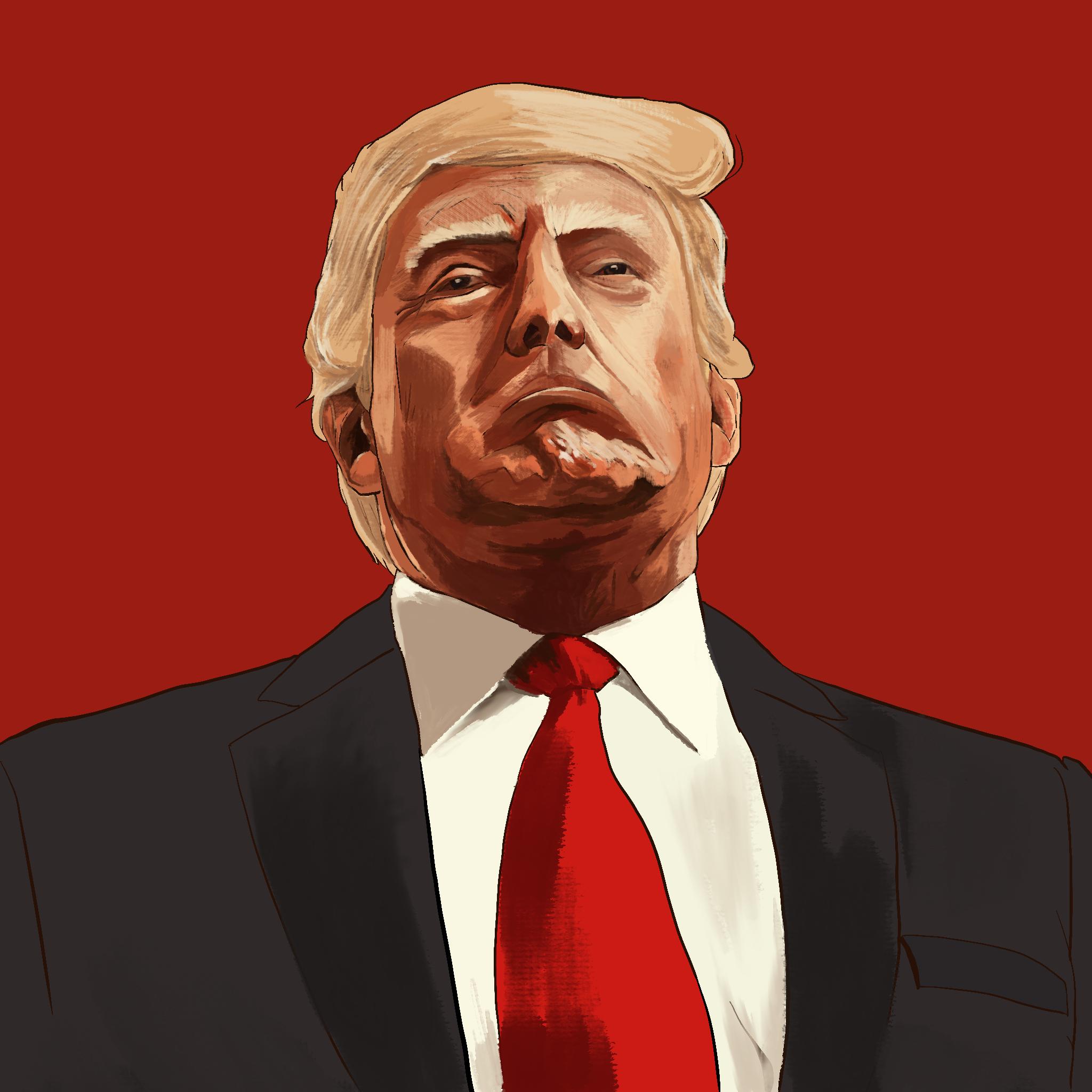
By MICHAEL PHAM ’27 STAFF WRITER
Back when the term “Artificial Intelligence” was first coined by a computer scientist John McCarthy in 1956, AI was still in its infancy. Today, it is evolving at a mind-boggling pace, redefining the framework for technological breakthroughs. However, the leap from rudimentary chess programs solving mates to advanced generative models like ChatGPT would not have been possible without the critical bedrock: AI chips.
An AI chip is a small device consisting of millions and billions of transistors that switch between on (1) and off (0). Unlike traditional CPUs, these chips are specifically designed
to train advanced AI systems, requiring vast data processing at significantly higher speeds.
As demand for computational power surges, many conglomerates in the tech industry have shifted towards manufacturing chips. Nvidia, the leading powerhouse of GPUs, used to render images and videos, recently developed chips such as H100 and A100, performing trillions of calculations per second. These chips offer parallel computations with enhanced architectures, which are important for large-scale AI tasks in machine learning, deep learning and generative models.
Google, another competitor, has released a quantum processor named Willow, breaking the boundary of chip innovation. Leveraging the

Editors-in-Chief
Visual Managing Editors
Michelle Lawrence ’26
Campus News
Off-Campus News
Features Layout
Ambrose Cole ’26
Ryan Qiu ’26
Kiern Lim ’25
Staff Writers & Staff Contributers
Emerson Leger ’25, Kiern Lim ’25 Caylie Zigner ’25, Rachel Hwang ’25
Online Editor Opinion
Arts & Leisure
Sports
Head Illustrator
Social Media Manager
Vicky Zhang ’26
Deric Choi ’26
Adam Yao ’26
Lexi Lubczenko ’25
Taylor Timbrook ’26
Abigail Rice ’26
Anaika Bandi ’27, Richard Liu ’26, Chelsea Lee ’27, Lulu Zhou ’26, Grace Carroll ’26, Martina Chai ’27, Elisabeth Rankin ’25, Michael Pham ’27, Bodie Lanning ’28, Max Yang ’27, Elva Cheng ’26, Arkadi Bindar ’26, Fiona Shen ’25
Faculty Advisers Alec Swartz, Nancy Body
Content Policy
The Hill News is the student-run newspaper of The Hill School. Content is determined by and reflects the views of the student editorial board and staff and not school officials or the School itself. The Hill News acts as an open forum for student expression where they have complete control over the content produced.


Want to contribute to The Hill News?
Come to our weekly meetings TBA or contact a member of our staff. To submit a letter to the editors or an opinion piece, email klim25@thehill.org eleger25@thehill.org


new quantum technology, Willow’s computational power is unimaginable. It could solve the world’s most complicated calculation in under five minutes, whereas the fastest classical supercomputer would take septillion years to achieve.
Although Willow is yet to be commercially viable, it is a game changer in chipmaking.
“One
of the major drawbacks these modern chips have is that they require rare materials and complex processes, which can cause shortages, high costs, and more consumption for resources”
- Hazem Saleh, instructor of computer science
Due to improved efficiency in computing, “these semiconductors have helped many industries like healthcare” advancing medical diagnostics and imperative treatments, according to Hazem Saleh, instructor of computer science.
However, there are drawbacks to these modern chips.
“One of the major drawbacks these modern chips have is that they require rare materials and complex processes, which
can cause shortages, high costs, and more consumption for resources”, noted Saleh. Many companies tend to accelerate chip development often at the expense of environmental concerns. Since chips consume an intensive amount of electric power, they rely heavily on fossil fuels and rare Earth metals for energy sources, leading to pollutant emissions and resource depletion.
Samuel Rhinehart, instructor of engineering, stated that “its harmful environmental impact is a detriment that needs to be addressed.”
Besides ethical concerns, AI chips could pose a huge threat to the economy.
“We are investing a lot of money into something that has not shown to actually have the definitive benefits,” said history and economics instructor Dylan Jennings Indeed, chips are expensive to design and remain inaccessible to many. An H100 chip from Nvidia could cost around $27,000 to $40,000. Such prices, reflecting upfront costs, present a huge barrier for start-up firms to arise in the field.
While AI chips offer monumental potential, their drawbacks still overshadow their benefits. Their high infrastructure costs and low sustainability make them far from being consumer friendly. Currently, the lack of solutions to tackle these issues poses a major obstacle to AI advancement. At the very least, stricter regulations are needed to ensure societal benefit as the priority rather than profit-driven production.

By JOSEPH TERRERI ’26, JACE BANKS ’26 & TREVON FOSTER ’26
NFHCA High School Preseason Watchlist. MAX Field Hockey Pennsylvania High School Preseason Player to Watch. Team Captain. Expectations were high for Hill field hockey forward Riley Savage ’25 as she entered her final season at Hill. Savage only exceeded those expectations, helping to lead the Blues to a perfect 22-0 record and capturing their second state title in just three years, ending what was a really special career.
Hailing from Charlotte, N.C., the 5-foot-6 forward began her career in 2021 with big dreams.
“I’d describe myself as a really driven human,” Savage said. “From a field hockey aspect, hardworking, but I think that goes hand in hand with how I live my life. Working toward my goals.”
It is clear that this hard work has paid off in big ways for Savage. Savage received multiple MAX field hockey awards including
MAX Field Hockey All American 1st Team, MAX Field Hockey All-Region Pennsylvania 1st team along with many other NFHCA and State awards. When she graduates in May, Savage will have garnered four MAPL and two state championships to her name.
Savage’s success on the field is driven by her ability to make plays. “She’s just a really fast player,” says Team USA and high school teammate, Opal Sparling ’26. “She’s really good in one-on-one situations.”
In particular, the one-on-one abilities that Sparling related to was clearly evident when spectating her on the field and looking over the stat sheet. Savage has been one of Hill’s top goal scorers in all four seasons, specifically leading the team in goals in 2022.
Though her goal scoring is just one of the many different elements she brings onto the field for the Blues, her playmaking is another.
“She’s a solid player,” assistant field hockey coach Liz Tamburro said. “She’s going to receive the ball. She’s going to make something happen, whether she gets a corner or a goal.”
These playmaking abilities have been observed by Tamburro on the field alongside her and off the field coaching her. Tamburro has had a unique, yet special relationship with Savage — they played on Team USA.
“I think it gives me a unique access to her and there’s a level of trust to begin with because we have the same foundation,” Tamburro said. “We were on the same team, so we have the same mentality, we know what to expect from each other.”
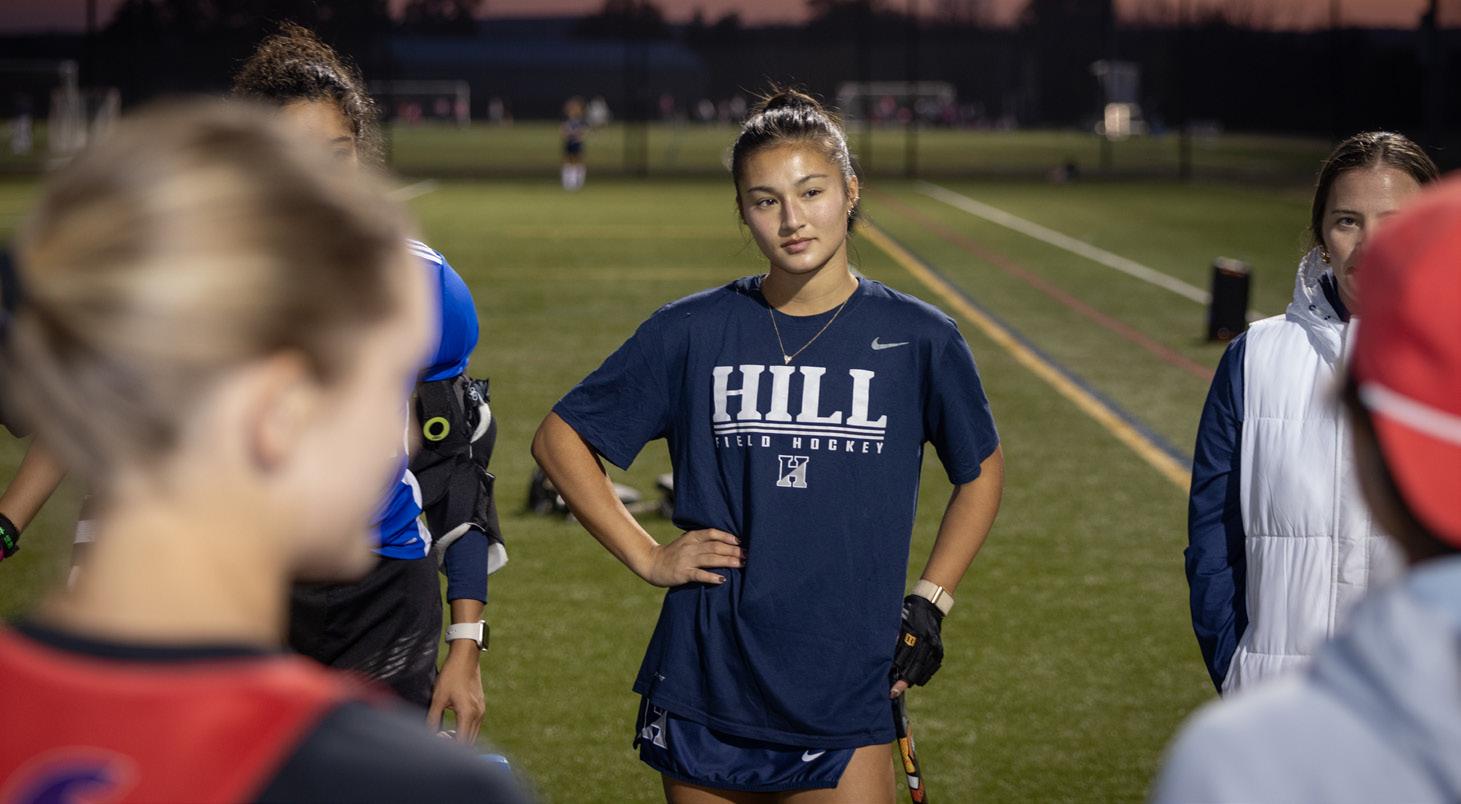
By AMY WANG ’26 and KR MURPHY ’26
Samantha Walther holds many impactful roles on The Hill school campus. She is an assistant coach on the girls varsity ice hockey team, dorm parent in Dell Village, World History teacher, and an advisor. For many, however, she is also a confident mentor and friend.
Walther herself graduated from boarding school at The Frederick Gunn School — then called The Gunnery— in rural Connecticut where she played goalie on the school’s hockey team. At Gunnery, she met Ari Baum, Hill’s associate head of school and head coach of the girls ice hockey team, for the first time. There, they created their connection which ultimately brought Walther to Hill. She also later played ice hockey at Hamilton College, breaking all-time records as a goalie, and competed professionally for the Connecticut Whale and Metropolitan Riveters.
Walther is a huge inspiration for many students at Hill, particular those in the ice hockey program. Adelia Chism ’26 spoke highly of Walther, as she learned from Walther as an adviser and as a goalie coach on the girls varsity ice hockey team. Chism particular-
ly treasured the open connection they share.
“There is a lot of open communication there, and she’s always down to talk if I’m stressed about anything hockey or school related,” Chism said.
Walther works to spend time with students and build relationships outside of the typical school setting. She worked hard to make real connections and made sure that students feel comfortable going to talk to her about anything. Chism shared how she had gone to Walther to talk in confidence about mental health and grades.
“She’s never been disappointed,” Chism said.
On the long hockey trips, Walther would often spend time in the back of the bus with the players rather than in the front with the coaches. She would give advice, joke around and tell stories. One player, Anna Lloren ’26, found it particularly humorous “when Walther told us about the time Moose pooped on her pillow.”
Other members of the team share memories from when Walther would spend time in the back of the bus. They openly share times when they laughed at TikTok videos together, filled her in on their personal drama and joked about moments from past seasons. Many players explain how their favorite moment from the season often involved Walther in one way or another.
From a faculty point of view, Coleman Weibley, the dean of students, sees Walther as
a hard-working and welcoming faculty member. Although this is Weibley’s first year at Hill, he confidently highlighted how Walther was a welcoming member of the Hill community.
“After I accepted the job at the Hill school last year, I returned to campus with my family to visit and we went to an end of the year cookout that Ms. McConney has for the residential life faculty.
Whether Walther is a coach, teacher, or mentor for students, they seem to cherish most her steadfast support. “Just her being there for me is something that really sticks out to me,” Chism said.
Ms. Walther and her boyfriend Zach invited us to sit at the table with them and we got to chat with her,” Weibley said. “She was one of the first people I got to have dialogue with and communicate with on a personal level, so that was fun.”
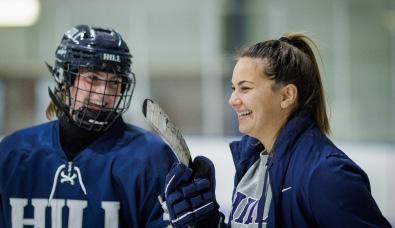
OPINION: Team captains should be chosen consistently
By ELISABETH RANKIN ’25
WRITER
The Hill School is no stranger to inconsistencies throughout the years, look at how the schedule has changed and warped in the past four years. While change and adaption is neccessary for growth, not everything needs to be constantly new and different. Oftentimes consistency can be useful as it provides a sense of reliability and assurance to both students and faculty alike.
One of many inconsistencies that can be witnessed around Hill is in the afternoon activities or more specifically with the selection of team captains for the Hill athletic teams which Hill takes much pride in. Un-
like other leadership position within the school, such as student government or prefect, which follow a clear election process in the spring for all positions, no team at Hill chooses its student captains the same.
While this diversity in the method to appoint student leaders may be welcomed by some, to others it is just simply unfair.
All other leadership positions at the Hill School have a standardized process with the same deadlines. While the applications may change year to year each student is given the same and equal opportunity to apply and be shown consideration for the position.
Team captains are not given this same “equal” consideration since because each team does it differently.
Some teams elect their captains based
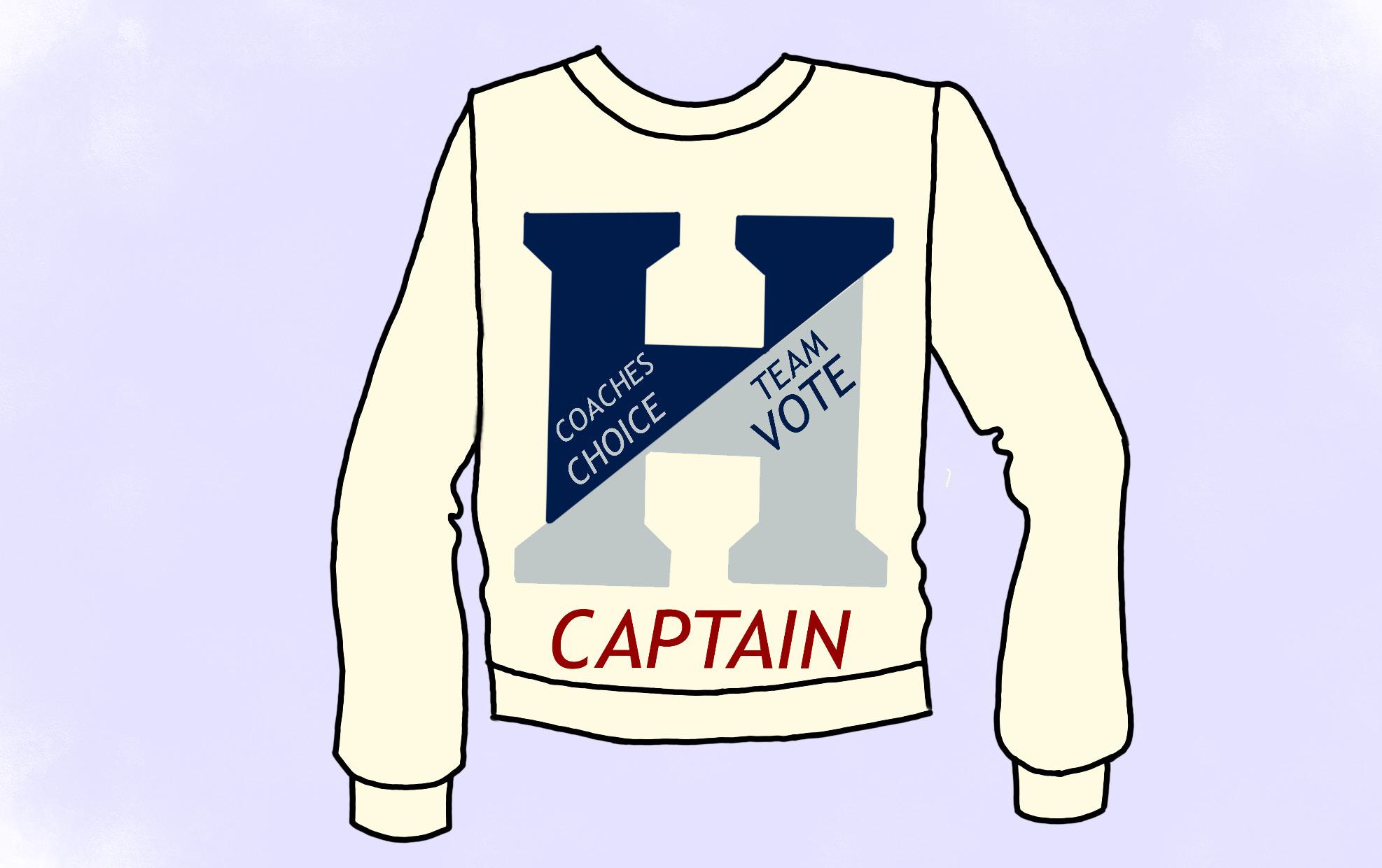
on a vote, some are chosen just based on the coaches’ preferences, and in others take both into consideration. While this variety might seem like a flexible and adaptable approach, it can also create confusion and frustration among student-athletes who may feel that the process make lack equity and consistency.
There’s no single answer to this issue, however in my opinion, there is a solution that would allow the student appointed captain to represent the team the best way possible. That would be to have the students directly choose their captains. Ultimately, a team captain is there to help communicate between students and coaches as well as to act as a role model and leader. While a coach’s insight is valuable, the traits that make a captain great are often not observable on a surface level, but are deep-
ly understood by their teammates who witness these leadership qualities in action as they train, compete, and grow together every day. In the long run, consistency in the leadership selection process would be beneficial to the entire Hill community. The establishment of a fair and transparent process for appointing of team captains for our sports team which represent Hill in the greater community at large would ensure that every student and every member of the team has an equal opportunity to earn a leadership role, just as they would in other aspects of the leadership journey and student life at Hill. By allowing students to choose their own captains ensures that leadership is earned through trust, respect, and firsthand experience—creating a stronger, more united team with genuine leadership.